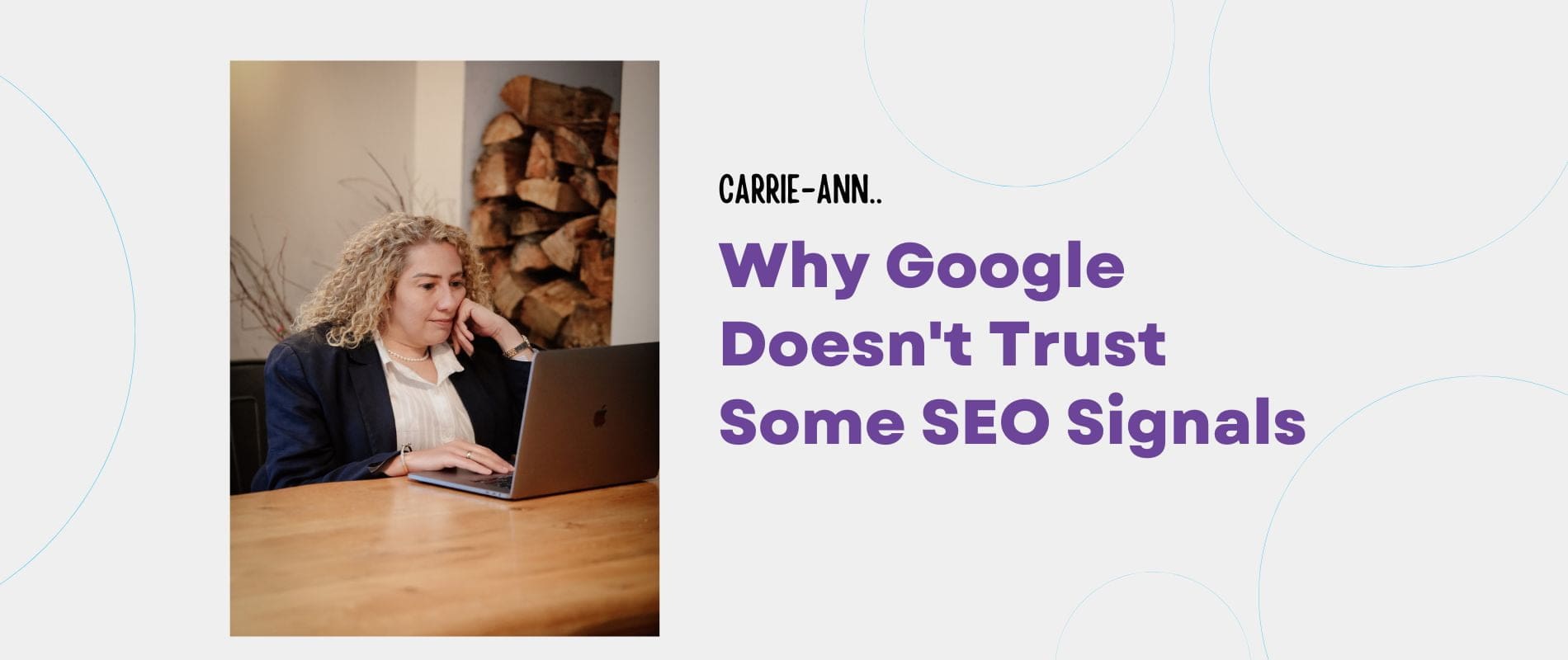
The SEO Signals To Avoid
We have chosen a career in digital marketing which means it’s busy day after day and constantly evolving. SEO (search engine optimisation) is the marketing strategy that keeps us on our toes the most. Google and other search engines like Bing are constantly improving their systems to reach their end goal: provide a search engine that matches their audiences queries accurately. It’s no wonder website owner and us SEO professionals are busy.
Following new updates is a full-time job and the latest update from Google is no exception. This one is regarding some signals that can rock the boat.
Google’s Gary Illyes explained why they don’t rely on certain SEO signals controlled by site owners. In a recent interview, he mentioned that data like authorship, which site owners can manipulate, often becomes spammy and unreliable.
Google used to use authorship signals but stopped because they could be easily faked. Instead, Google prefers signals that aren’t directly controlled by SEOs, like rel-canonical tags and meta descriptions, though these are treated as suggestions, not rules.
Illyes emphasised that site owners should focus on genuine content rather than trying to manipulate signals.
Here are examples of SEO signals that Google no longer uses or doesn’t trust much.
These include:
- Authorship Markup: It was too easy to fake, so it was discontinued.
- Keywords in Meta Tags: Often misused
- Links from Guest Posts: They can be manipulative, so their value is diminished.
Keywords in meta tags – It simply means trying to manipulate or convince Google you should rank for a keyword because it is in your meta title or description is not enough. You really have to make sure the page covers the topic and the content is relevant rather than just created to rank for a keyword.
In conclusion, Illyes encouraged focusing on real, helpful content rather than trying to trick search engines with manipulative tactics.
What does helpful content mean?
Creating useful content for SEO involves focusing on quality, relevance, and user experience.
In a nutshell, it is writing content that is written for real humans. Your content needs to have human emotion and it has to be useful for the user. Google is getting better at understanding what a searcher wants.
Here are some simple tips:
- Understand Your Audience: Know what your audience is looking for and address their needs.
- Use Keywords Wisely: Incorporate relevant keywords naturally in your content without overstuffing or waffling on for the sake of including keywords.
- Create Valuable Content: Offer useful, informative, and engaging content that solves problems or answers questions. We have seen a big increase in traffic for question and answer based content.
- Use Clear Headlines and Subheadings: Break up content with headings that make it easy to scan. This will also help your readability score.
- Optimise for Mobile: Ensure your content is mobile-friendly as many users browse on phones.
- Include Internal and External Links: Link to other relevant pages on your site and to reputable external sources. Don’t get this wrong, can be a disaster.
- Use Visuals: Include images, videos, and infographics to make content more engaging. Nobody wants to read long content.
- Write in Plain Language: Avoid jargon; keep your language simple and easy to understand.
- Update Regularly: Keep your content fresh and up-to-date.
By following these tips, you can create content that is both user-friendly and SEO-friendly, helping your website rank better in search results. Win win.